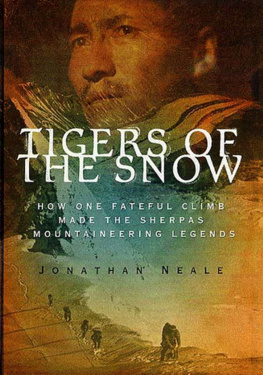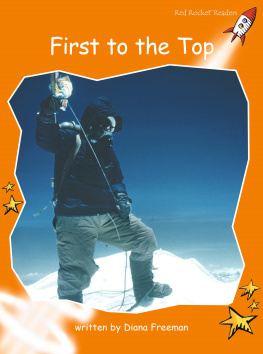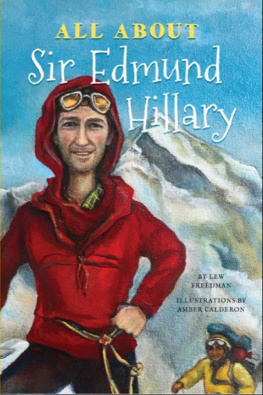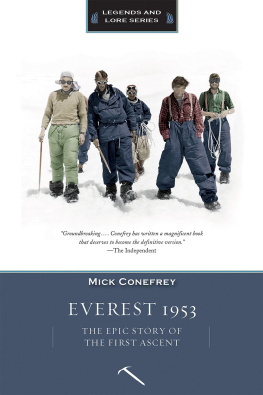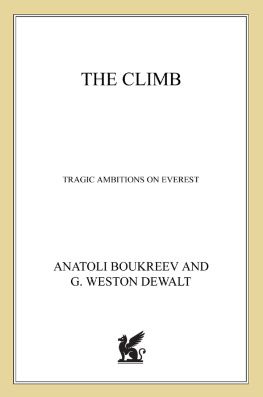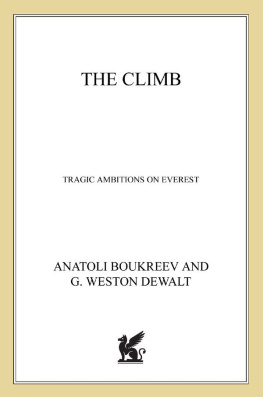For Pem Pem,
Our amala
An extraordinary woman who lived through extraordinary
times and experienced all the highs and lows of Everest
And for the new generations of Tenzing who represent the
future of the Sherpas
Pasang, Kinzom, Dechen, Deki, Nikhil, Tashi Phinzo,
Syaza, Pema and Dechen, Karchen, Norbu, Khenrab, Vrinda,
Norkila, Tshering Dolkar, Pasang Tshering, Phinzo Tashi,
Lhakpa, Tshering, Kunzes Tsedol, Riwu Dorje, Riggyal Motup,
Kesang Deki, Phurpi Yangzee, Karmi Diki, Nima Kanchi,
Tashi Sera, Rigzin and Tenzing Thinley
Contents

FOREWORD
by His Holiness The Dalai Lama
I n Tibet, mountains are often considered the abodes of deities. Because of this, many people tend to go round the foot of mountains on pilgrimage. In fact, Tibetans have generally shown little interest in scaling the peaks that surround them, perhaps out of deference to these presiding deities. However, I think there is also a more practical reason. Most Tibetans have to climb far too many mountain passes to have any wish to climb higher than they must. When the people of Lhasa, for example, sometimes climbed for pleasure, they chose hills of a reasonable size and on reaching the top would burn incense, say prayers and then relax with a picnic.
However, setting ourselves a clear goal and a firm determination to achieve it are two of the most powerful elements in accomplishing whatever we wish. There were many examples of this in Tibet. Great scholars often tell of their youthful ambition to study in the great monastic universities and earn their degrees, and, no matter what hardship they faced, they never gave up. Likewise, there are many tales of yogis who resolved never to leave their caves until they had gained the feat of meditation.
I believe that the achievement of Tenzing Sherpa, who accompanied Edmund Hillary on the first ascent of Everest, the worlds highest mountain, in 1953, is a similarly inspiring story. For conquering a mountain peak requires not only great physical stamina, but also the possession of great courage, loyalty and trust, a concern for your companions greater than the natural urge for self-preservation. These are qualities I believe he possessed in abundance. Even today, many years after the event, adults and children alike marvel that Tenzing and Hillary were able to reach the highest point on earth. It has become a standard of human success.
Tenzing and the Sherpas of Everest tells the story of Tenzing Sherpa and several members of subsequent generations of his family and their relationship to Everest. This is an admirable example of what cooperation and teamwork can accomplish.

FOREWORD
by Sir Edmund Hillary
T he Sherpas of the mighty Himalaya are a remarkable group of people. Mostly small in stature they are amazingly strong and tough with an outstanding ability to perform effectively in the thin air at high altitude. When I first met them fifty years ago their life was a harsh and uncomfortable one which they dealt with in remarkably philosophical fashion. They had an outstanding sense of humour even in the most unpleasant conditions and a strong community spirit, which gave them a remarkable combined strength. They were devout Buddhists with strong cultural beliefs and these qualities carried them through all the challenges that their tough environment presented to them.
In the early days they grazed their yak at high altitudes and drove them over high alpine passes to trade in Tibet. But they had no interest in just climbing mountains. In the 1920s the first British expeditions attempted the ascent of Mount Everest and they employed groups of Sherpas as high-altitude porters. Few of the Sherpas at that stage had any climbing skills but their strength and ability to acclimatise made them formidable load-carriers. With their agreeable temperaments they proved excellent expedition companions.
As the years passed the skills of the Sherpas greatly increased and they achieved worldwide renown in the international mountaineering community. My first Himalayan expedition was to Garhwal in 1951 and we recruited four Sherpas from Darjeeling. Our sirdar (foreman) was Pasang Dawa Lamaa formidable personality and a strong climber. Later that year we joined up with the famous mountaineer Eric Shipton to carry out a reconnaissance of the southern approaches to Mount Everest. His sirdar was the amazing Ang Tharkay Sherpaa warm and friendly personality with a fiery nature when action demanded it. Ang Tharkay was one of the really great Sherpas and I regard myself as very fortunate to have had his friendship.
I didnt meet Tenzing Norgay until the beginning of our 1953 British Everest Expedition but already his reputation as a skilled and forceful climber was widely known. I was very impressed on my first meeting with Tenzing. Tall and strong, with a flashing smile, he exuded an aura of firm confidence. But perhaps his unique quality was his absolute determination to try and reach the summit of any mountain he was climbingby no means a common attitude among the Sherpas in those days.
I soon learned to respect Tenzings strength and skill and when we formed a team on Everest I believe we became a strong and energetic couple. We both had substantial motivation and confidence and this drove us to our ultimate success on top of the world. At this stage of our lives we were not really close friends (as Lambert and Tenzing had been) but mainly a well-balanced climbing team. It wasnt until nearly thirty years later when I was New Zealand High Commissioner to India that I saw a great deal of Tenzing and we built up a warm and enduring friendship.
Every great Sherpa sirdar had his own particular qualities and strengths. Dawa Tenzing had remarkable dignity and influence and reigned over my expeditions for a number of years. When I commenced my programmes of building schools and medical facilities Mingma Tshering Sherpa proved an outstanding leader for our Himalayan Trust activities for almost twenty years.
And the Sherpas didnt just excel in the mountains. With the establishment of schools in Solu Khumbu, many of the Sherpas blossomed in different fieldsAng Zangbu Sherpa became a senior pilot on a giant 747 jet; Pertemba Sherpa was not only an amazing climber but established his own trekking agency with great efficiency; Kami Temba qualified as a medical doctor; Mingma Norbu supervised all the Himalayan activities of the World Wildlife Fund; Lhakpa Norbu earned a doctorate at the University of Seattle; and Ang Rita Sherpa directed the widespread activities of the Himalayan Trust in Solu Khumbu.
Tenzings family, too, have excelled in many fields. A number of them have climbed Mount Everest, some are teachers and company executives, and some run their own trekking agencies. Given the opportunity there is little that the Sherpas cannot achieve. For a tiny group of people from the wild and remote areas of the Himalaya the Sherpas have proved they are capable of dealing not only with extreme heights, but they can successfully tackle many of the major challenges of the Western world too.

INTRODUCTION
by Tashi Wangchuk Tenzing
I am a Sherpa, a man of the mountains of the eastern Himalaya. I am the grandson of that most renowned of all Sherpas, Tenzing Norgay, Man of Everest, Tiger of the Snows. I am proud of my heritage and my people and draw immeasurable strength from my family and my Tibetan ancestry.
Next page

